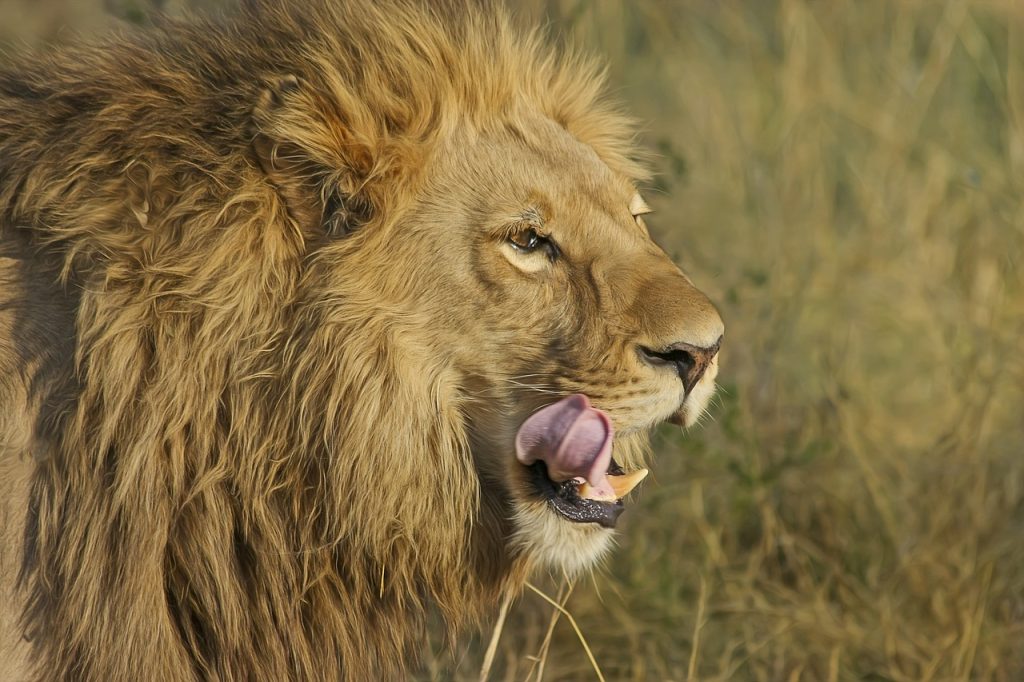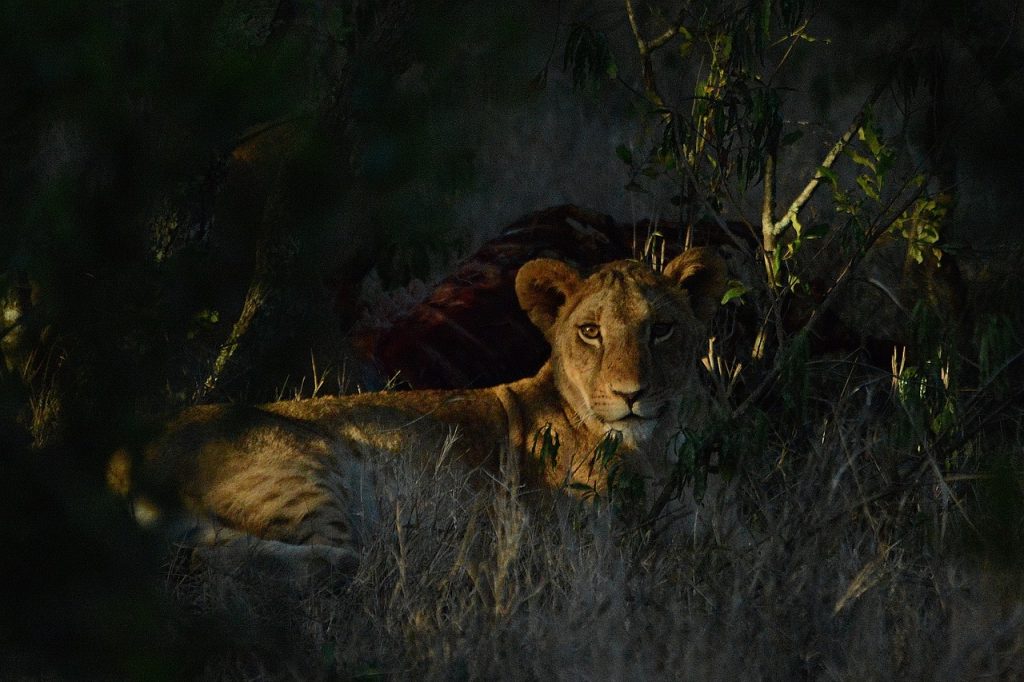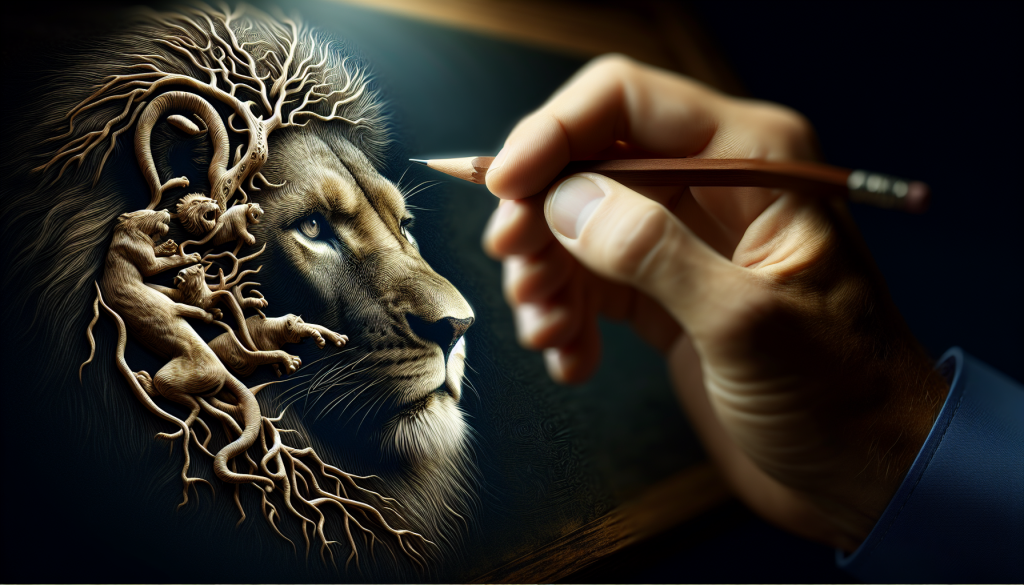In this article, we’ll be taking a closer look at the fascinating world of lion predators and threats, as presented in the encyclopedia entries. Lions, often referred to as the kings of the savannah, hold a unique place in the animal kingdom. However, as impressive and majestic as they are, these powerful creatures are not without their own predators and threats. From rival carnivores to man-made dangers, let’s delve into the encyclopedia entries to discover more about the challenges that lions face in their struggle to survive in the wild.
1. Natural Predators
1.1 Hyenas
Hyenas are one of the top natural predators of lions. These intelligent and highly adaptable creatures have powerful jaws and sharp teeth, making them formidable opponents. They often target young lion cubs, as they are easier to overpower. Hyenas are known for their notorious scavenging behavior, but they are also skilled hunters and can bring down adult lions in certain situations. Hyena clans’ collective strength and strategic hunting tactics pose a significant threat to lion populations in many regions.
1.2 African Wild Dogs
African wild dogs, also known as African painted dogs, are highly efficient predators that hunt in packs. They have exceptional endurance and can maintain high speeds while chasing prey for extended periods. These dogs are known for their cooperative hunting techniques, where they work together to take down their target. Though their hunting techniques differ from lions, competition over prey can arise between the two species. African wild dogs have been observed stealing kills from lions, and sometimes, confrontations between lions and wild dog packs can result in deadly clashes.
1.3 Nile Crocodile
While lions primarily inhabit terrestrial environments, they occasionally come into contact with Nile crocodiles, a deadly aquatic predator. These massive reptiles lurk in rivers and waterholes, making any interaction with lions risky. Lion prides often need to cross water bodies for various reasons, and crocodiles take advantage of these opportunities. By ambushing unsuspecting lions, they can inflict fatal injuries and drag them underwater. Nile crocodiles are a constant threat to lions that must traverse watery territories, adding another layer of danger to the king of the jungle’s life.
2. Humans as Predators
2.1 Trophy Hunting
One unfortunate threat to lion populations is trophy hunting. Despite efforts to reduce trophy hunting and regulate its practices, it remains legal in some countries. Wealthy individuals from around the world pay substantial amounts of money to hunt and kill lions for sport and to obtain trophies such as their heads, pelts, or claws. This activity disrupts the delicate balance of lion populations and can lead to a decline in their numbers, particularly in areas where sustainable hunting practices are not enforced.
2.2 Poaching
Similar to trophy hunting but driven by different motives, poaching poses a significant threat to lion populations. Poachers target lions for their bones, skins, and other body parts, which are in demand for traditional medicines or as luxury items. This illegal trade not only reduces lion numbers but also fuels the black market, perpetuating the cycle of poaching and endangering the species further. The lucrative nature of this trade attracts organized criminal networks that exploit local communities and ecosystems for their gains.
2.3 Retaliatory Killing
Conflicts between lions and humans can sometimes escalate, leading to retaliatory killings. When lions encroach on human settlements or attack livestock, local communities may resort to lethal measures to protect their livelihoods. Retaliatory killings not only harm individual lions but also contribute to a negative perception of these magnificent creatures. Encouraging coexistence between lions and local communities through education and implementing effective mitigation strategies is crucial for reducing retaliatory killings and maintaining peace between humans and lions.

3. Intraguild Predation
3.1 Leopards
Leopards are highly skilled hunters, agile climbers, and masters of stealth. While they primarily target smaller prey, they occasionally pose a threat to lion cubs. Due to their solitary nature and smaller size, leopards can maneuver in dense vegetation, where lions find it challenging to follow. This gives them an advantage when it comes to preying on vulnerable lion cubs left unattended by their mothers. In areas where lions and leopards overlap, female lions must remain vigilant to protect their offspring from potential leopard attacks.
3.2 Spotted Hyenas
Although hyenas have already been mentioned as natural predators, it is essential to note that they can also engage in intraguild predation with lions. In areas where both species coexist, they compete for similar prey and often come into direct conflict. Spotted hyenas, in particular, have been observed stealing kills from lions and even targeting lion cubs in some instances. This interspecies competition intensifies during times of scarce food resources, placing additional pressure on lion populations.
4. Competitive Predators
4.1 Cheetahs
While cheetahs mainly pose competition to lions in terms of prey, they can occasionally come into direct conflict. Cheetahs rely on their incredible speed to secure meals, but this advantage diminishes if lions or other predators are present. Lions have been documented stealing cheetah kills, forcing cheetahs to abandon their hard-earned meals. This can be detrimental to cheetah survival, as they often struggle to compete with other predators for limited resources. Despite these occasional clashes, cheetahs and lions generally coexist without significant direct aggression towards each other.
4.2 African Wild Dogs
African wild dogs, previously mentioned as natural predators, also compete with lions for prey. These highly efficient hunters have been observed chasing away lions from their freshly killed meals, capitalizing on their superior numbers and teamwork. African wild dogs have a unique hunting style, relying on long-distance chases to exhaust their prey. This strategy allows them to capture large prey, including animals that lions also target. These competitive dynamics highlight the complex interactions between predators in the African ecosystem.

5. Threats to Lion Populations
5.1 Habitat Loss
The rapid expansion of human populations and unsustainable land-use practices have led to the loss and fragmentation of lion habitats. As humans convert more land for agriculture, settlements, and infrastructure, lion populations face a shrinking home range. The reduction in suitable habitat not only disrupts the natural balance of ecosystems but also increases the likelihood of human-lion conflict. Protecting and restoring lion habitats is crucial for safeguarding their populations and maintaining healthy ecosystems.
5.2 Human-Wildlife Conflict
As human populations expand, conflicts with lions become more frequent. Competition over resources, particularly livestock, can lead to deadly encounters between humans and lions. Local communities often retaliate by killing perceived threats to their livelihoods, further exacerbating the conflict. Implementing effective mitigation strategies, such as predator-proof enclosures and compensation programs, can help reduce human-lion conflicts and foster coexistence.
5.3 Disease Outbreaks
Lions are susceptible to various infectious diseases, and outbreaks can have devastating effects on their populations. Distemper, tuberculosis, and feline immunodeficiency virus (FIV) are among the diseases that can afflict lions. These diseases can spread quickly within prides, leading to high mortality rates. Outbreaks also weaken lion populations, making them more vulnerable to other threats. Proper disease surveillance, prevention, and vaccination programs are essential for protecting lion populations from the impacts of infectious diseases.
6. Impact of Climate Change
6.1 Shifting Prey Dynamics
Climate change has the potential to alter prey dynamics, which can indirectly affect lion populations. Shifts in rainfall patterns, vegetation changes, and the availability of water sources can impact the distribution and abundance of prey species. As a result, lions may face challenges in finding suitable food sources, leading to reduced reproduction rates and overall population decline. Understanding the complex interactions between climate change, prey dynamics, and lion populations is crucial for implementing effective conservation strategies.
6.2 Desertification
Desertification, a consequence of climate change and human activities, poses a significant threat to lion populations. As arid areas expand, suitable habitats shrink, affecting both prey species and lions directly. The encroachment of deserts and the degradation of once fertile lands can lead to population declines and local extinctions. Combating desertification through sustainable land management practices and reforestation efforts helps safeguard the habitats on which lions depend.

7. Reliance on Key Prey Species
7.1 Wildebeest
Wildebeest play a crucial role in supporting lion populations. Their annual migration in vast numbers not only provides a significant food source but also shapes the landscape by maintaining grazing areas. During the migration, lions capitalize on the abundance of wildebeest, successfully raising their cubs and replenishing their energy reserves. However, habitat loss, poaching, and other factors threatening wildebeest populations have ripple effects on the entire ecosystem, including lions.
7.2 Zebra
Zebra, with their high numbers and adaptability, also contribute to the survival of lion populations. Lions often target zebras due to their relatively large size and nutritional value. The presence of healthy zebra populations ensures a consistent food supply for lions and reduces competition between predators. Protecting zebra habitats and managing their populations sustainably is crucial in maintaining the balance of the African savannah ecosystem and securing the future of lions.
8. Genetic Threats and Inbreeding Depression
8.1 Genetic Bottlenecking
Small isolated lion populations face a potential threat known as genetic bottlenecking. When a population becomes genetically isolated, such as on islands or in fragmented habitats, their gene pool narrows. The reduced genetic diversity can lead to increased vulnerability to diseases, reduced fertility rates, and lowered adaptive potential. To combat genetic bottlenecking, conservation efforts should focus on maintaining connectivity between lion populations, allowing gene flow and genetic diversity to flourish.
8.2 Inbreeding Depression
Inbreeding depression occurs when closely related individuals mate, leading to negative genetic consequences. In small or isolated lion populations, inbreeding becomes a concern due to limited mating options. Inbred cubs are more prone to health issues, reduced fertility, and decreased overall fitness. Implementing strategies to monitor genetic health and promote outbreeding, such as translocations and introducing new individuals to populations, helps mitigate the risks of inbreeding depression in lion populations.

9. Selective Predation on Lion Cubs
9.1 Infanticide by Males
In the lion kingdom, male lions have been observed engaging in infanticide. When new males take over a pride, they may kill the existing cubs to ensure their own genetic legacy. By eliminating unrelated cubs, incoming males can mate with the pride’s females and father their offspring. These actions, although seemingly brutal, are an evolutionary strategy that ensures their genes are passed on. The threat of infanticide by males underscores the vulnerability of lion cubs during pride takeovers.
9.2 Infanticide by Intermale Coalitions
Infanticide can also occur when male coalitions challenge and defeat resident males, taking over the pride territory. These coalition takeovers often result in the killing of existing cubs, signaling a dramatic shift in dominance and the establishment of new genetic lines. The motivation behind this behavior is similar to that of infanticide by individuals males: to eliminate potential competitors and maximize their reproductive success. As a result, lion cubs face significant risks during pride upheavals.
10. Introduced Species as Predators
10.1 Domestic Dogs
Introduced domestic dogs can become predators to lion populations. In areas where human settlements are close to lion habitats, domestic dogs may roam and come into contact with lions. Unfortunately, some domestic dogs have been observed attacking and injuring lions, posing a new threat to their survival. Ensuring responsible pet ownership, promoting awareness, and implementing measures to prevent dog-lion interactions are vital for safeguarding both lions and domesticated animals.
10.2 Horses
Though not a typical predator, horses introduced into lion territories can impact lion populations indirectly. Free-roaming domestic horses can compete with native herbivores for resources such as water and grazing lands. This competition can lead to reduced prey availability for lions, potentially affecting their reproductive success and overall survival. Careful management of introduced species is necessary to minimize their impact on the delicate balance of ecosystems that lions rely on.
In conclusion, lions face a multitude of predators and threats that endanger their populations and the ecosystems they inhabit. Understanding the complex interactions between these factors is crucial for implementing effective conservation strategies. By addressing natural predators, human-induced threats, habitat loss, climate change impacts, prey dynamics, genetic risks, and selective predation, we can work towards securing a future for these majestic and iconic animals. Conservation efforts must combine habitat restoration, strengthened legislation against illegal practices, community engagement, and sustainable management of ecosystems to protect lions for generations to come.


